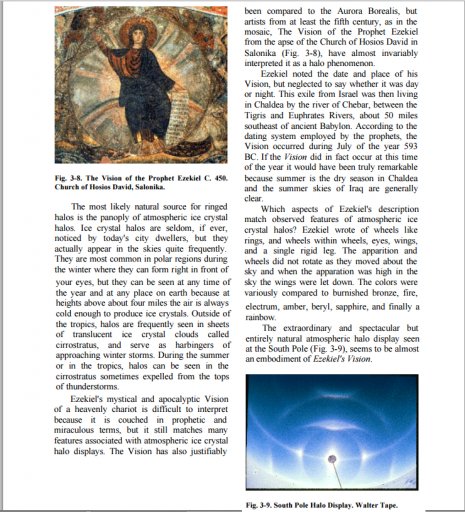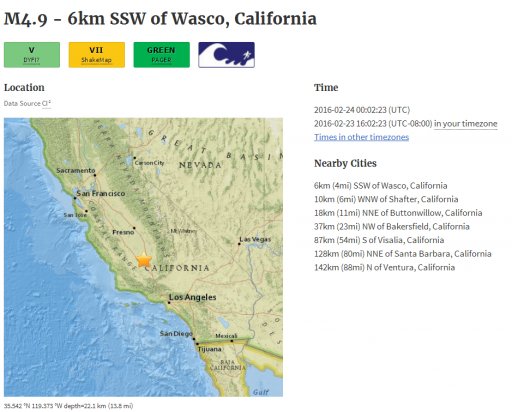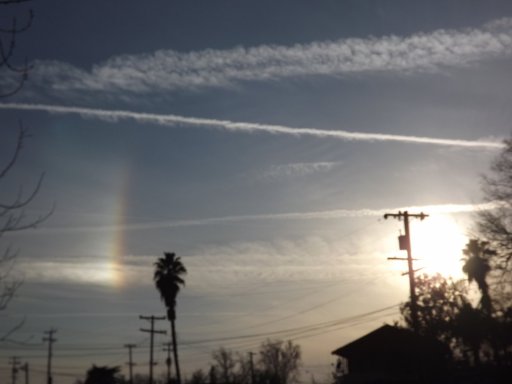The above image is one of the earliest representations of a solar halo and two sun dogs (also called parhelia, or "mock suns"). It's dated 1520 and is from the 1552 The Book of Miracles, the German 16th-century manuscript of supernatural phenomena, and looks like it was painted from memory, or from a verbal description. Here's a more modern photograph of a similar configuration
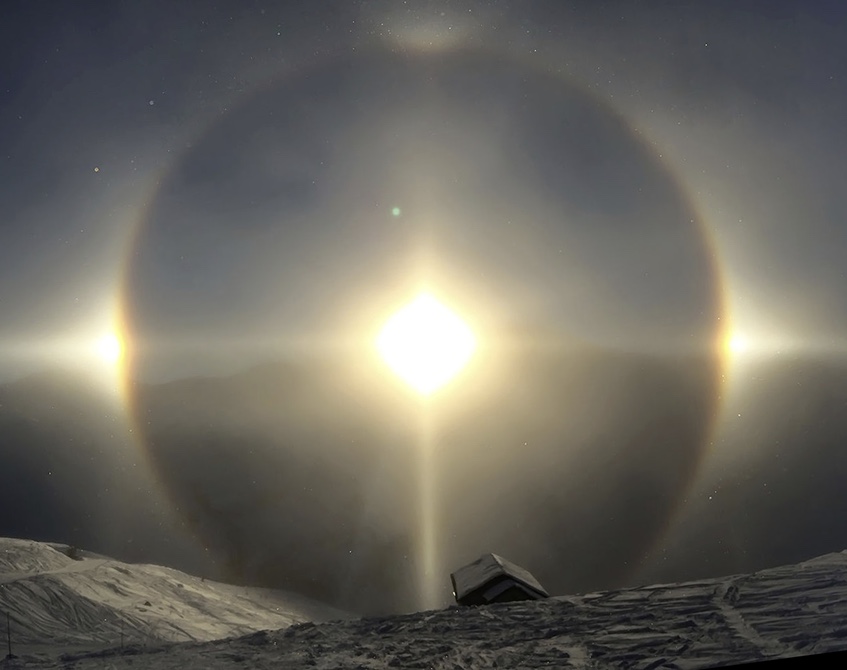
Halos and sun dogs are formed by ice crystals refracting the light of the sun. They form at specific distances from the sun (due to the angles of the crystal, and the degree to which it bends light). The most common (and smallest) halo forms at 22° around the sun, and hence is known as a 22° Halo. Sun dogs form on either sides of this halo, level with the sun. Sometimes they look like small segments of a rainbow, and sometimes they are very bright, almost as bright as the sun (especially if there is some cloud in front of the sun
People's experiences with halos and sun dogs varies by individual. I remember quite vividly the first time I saw a halo, in 1996, somewhere near Fresno, California. I saw them occasionally when living in Los Angeles, but I noticed a distinct increase in the frequency when I moved 350 miles north to the Sacramento region.
Many people don't notice halos simply because they are so close to the sun, and people avoid looking at the sun, because it hurts your eyes. Halos are best observed when part of the sun is obscured, or indirectly with a digital camera.
So how common are halos? How common are sun dogs? Has the frequency of these things changed over time?
In this excellent time-lapse video, Patrick Roddie documents the occurrence of halos on 21 days in March 2015.
Unfortunately Mr Roddie incorrectly describes the halos as "sun dogs", when in fact no sun dogs appear in the video. But from this we can deduce that halos are fairly common in San Francisco in March, and sun-dogs less so.
But what does history tell us about the frequency of halos and sun dogs? There's quite a history of descriptions of these phenomena, going back hundreds of years.
Notes on historical terminology:
- In some places halos and sun dogs are referred to as "meteors", which is an old-fashioned term for anything seem in the sky, and not just meteorites)
- Older books use the terms "halo" and "corona" interchangeably. In more modern usage the term "corona" is used for the irregular rings of iridescence seen much closer to the sun than with halos.
- Sometimes the size of the halo is referred to by the angular diameter, and not the radius. A normal halo has a radius of 21.7°, usually referred to as 22° halos. But in older works this might be referred to as a 44° diameter halo, or even approximated as "about 45° diameter"
The oldest reference to halos and sun dogs is from Aristotle's meteorology, which was written over two thousand years ago. While his speculation about causes might be a bit off, his observations are fairly accurate. He has quite a long section on this topic.
http://classics.mit.edu/Aristotle/meteorology.3.iii.html
Let us now explain the nature and cause of halo, rainbow, mock suns, and rods, since the same account applies to them all.
We must first describe the phenomena and the circumstances in which each of them occurs. The halo often appears as a complete circle: it is seen round the sun and the moon and bright stars, by night as well as by day, and at midday or in the afternoon, more rarely about sunrise or sunset.
...
Mock suns and rods are always seen by the side of the sun, not above or below it nor in the opposite quarter of the sky. They are not seen at night but always in the neighbourhood of the sun, either as itis rising or setting but more commonly towards sunset.
A Goodly Gallerye with a Most Pleasaunt Prospect: Into the Garden of Naturall Contemplation, to Behold the Naturall Causes of All Kynde of Meteors, William Fulke: 1563
" (with an archaic spelling, "Halon"):
http://books.google.com/books?id=ebpCAQAAMAAJ&vq=halo&pg=PA34#v=onepage&q&f=false

Encyclopedia Britannica, Volume the Third, 1773The Circle caled Halon, is a garland of diuerse collours that is seen about the sunne, the Moone, or any other sterre.
https://books.google.com/books?id=Ow8UAAAAQAAJ&pg=PA457#v=onepage&q&f=false
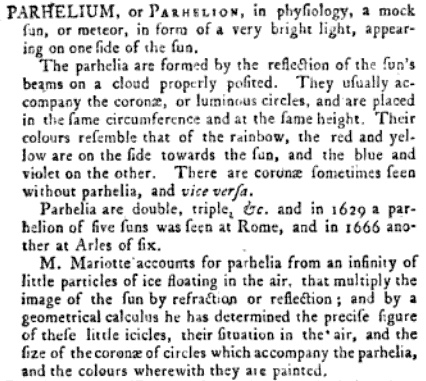
Or 1813:
https://archive.org/stream/researchesabouta00forsiala#page/100/mode/2up
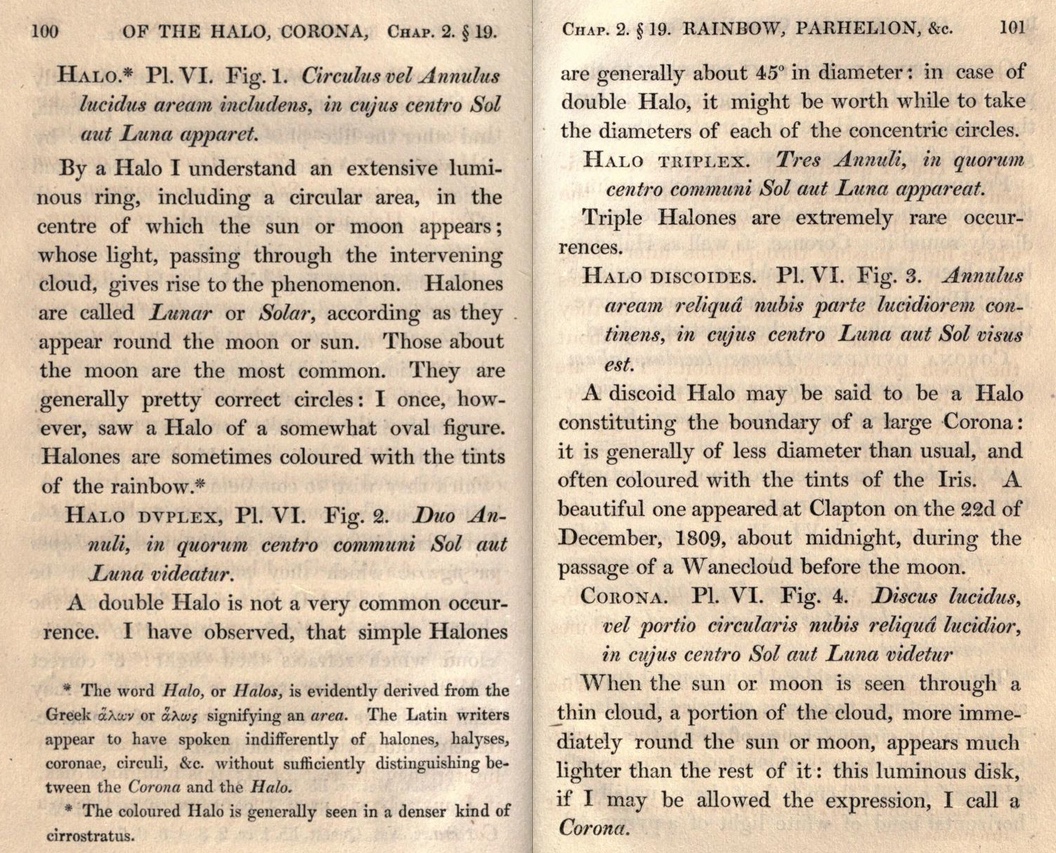
https://archive.org/stream/researchesabouta00forsiala#page/n479/mode/2up

Encyclopedia Brittanica, 1823
https://books.google.com/books?id=vVQ0AQAAMAAJ&dq=encyclopedia britannica halo&pg=PA673#v=onepage&q=encyclopedia britannica halo&f=false
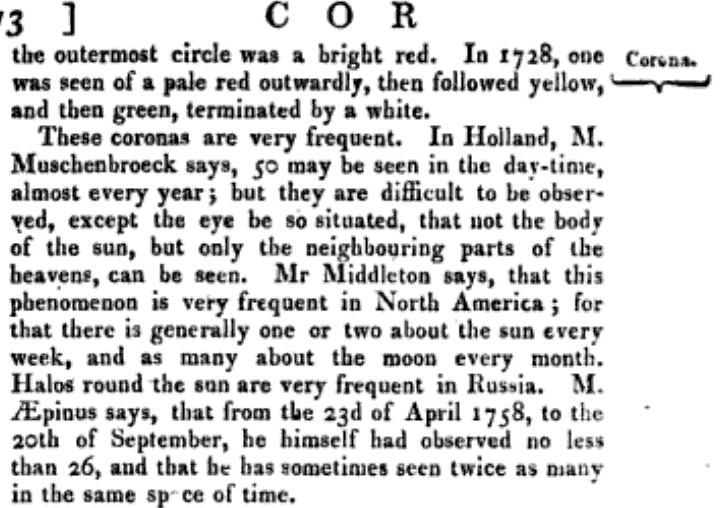
The Florida Night Sky, 2002
https://books.google.com/books?id=0NK98MUpOG4C&lpg=PA65&dq=parhelia rare common&pg=PA65#v=onepage&q&f=false
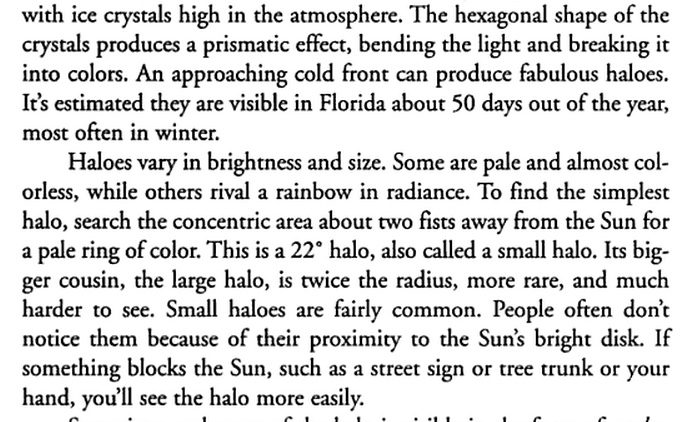
Color and Light in Nature, 2001
https://books.google.com/books?id=4Abp5FdhskAC&lpg=PA171&pg=PA171#v=onepage&q&f=false
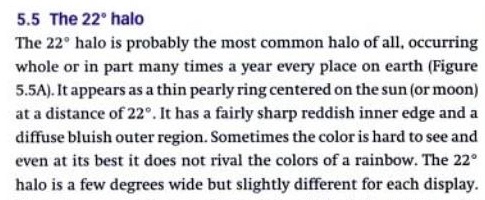

The Atmospheric Optics web site give figures for the frequency of the various types of halo in days per year, with the 22° halo being 100 days per year, which is about twice a week. Parhelia (sun dogs) are seen once or twice a week. This will vary by location and time of year.
http://www.atoptics.co.uk/halo/whyinfr.htm
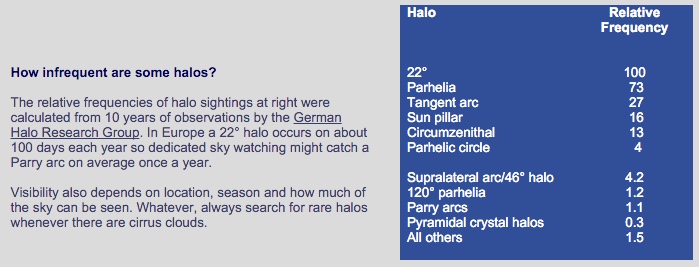
The figures are also averages. This does not mean you will see halos exactly twice a week. You might see none for a month and they see them every day for two weeks. See: http://personal.inet.fi/koti/luuk3/halot/
Last edited:

